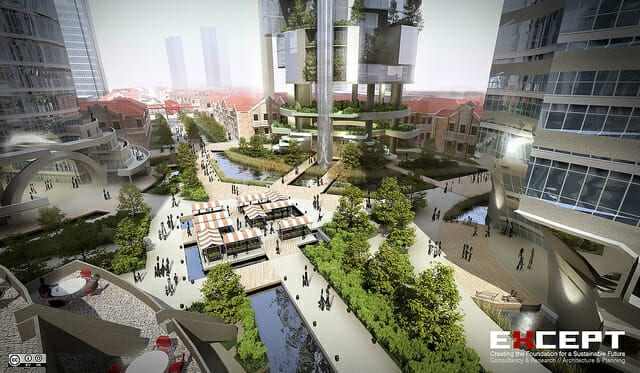
Vertical Farm Construction & Impressive Designs around the World
One trend that we’ve really been seeing grow lately in the construction industry is the vertical farm and urban agriculture buildings that are sometimes referred to as “farmscrapers.” Vertical farms are multi-story buildings that use hydroponic and aeroponic systems that are lightweight and energy efficient. They have been popping up in some really unexpected places and catering towards the movement for locally sourced goods, sustainable urbanization, and a secure food supply.

Purpose of Vertical Farms
According to Dr. Dickson Despommier, nearly 80 percent of the world’s population will live in urban centers by 2050, and the human population is estimated to increase by three billion people before then. Not only do vertical farms provide us with healthy green spaces, but they also increase food production centers in places where agricultural land is sparse. It’s seen as a way to feed the growing population and fight the effects of climate change, such as drought, flooding, and temperature changes.
“The efficiency in their design is the small footprint,” said Jason Chmura, an associate at KSS Architects, which has designed a vertical farm in a former steel mill in Newark, New Jersey. “As [indoor farms] become more popular, the only way they’ll work is if they keep going vertical.”
Constructing Vertical Farms
For many reasons, vertical farm construction is vastly different from other types of high-rise buildings. Large-scale designs can benefit from robotics and automaton to produce high-density yields with shorter growth cycles and reduced resource consumption. Micro-controllers dictate water cycles, temperature monitoring, air circulation, lighting controls, and nutrient monitoring.
These are some of the common features installed in modern vertical farms:
- Stacked plant racks
- Climate controls
- LED lights
- Aeroponics (spray systems)
- Aquaponics (water systems)
- Automation technology

Impressive Examples of Vertical Farms
The Newark, New Jersey example mentioned above is called AeroFarms is expected to be the largest indoor farm in the world. Spanning 69,000 square feet in size, it has the potential to produce up to two million pounds of food each year. The$30 million project is designed to use approximately 95 percent less water than conventional farms and optimize pH balance and temperature to create an ideal growing environment.
Another large vertical urban farm is Shiegeharu Shimamura’s design in Japan. He actually developed the farm inside an abandoned semiconductor factory and created a farm that spanned 25,000 square feet of growing space. Some farming tasks, including seeding and packaging, have been done by robots; however, some harvesting tasks continue to be done by hand.
Suburban Chicago is also home to a large indoor farm called FarmedHere. This farm has utilized a soil-free model and aquaponic process to grow organic produce in a sustainable and delicious way. You can buy FarmedHere products, like microgreens, fresh basil, and basil vinaigrette, at local markets in the Chicago area.
You can learn about other promising vertical farm designs and plans in the works on Inspiration Green. The Association for Vertical Farming website features an interactive map, where you can search for vertical farm projects going on all around the world.
Photo credit: Except, Plant Chicago via Flickr



